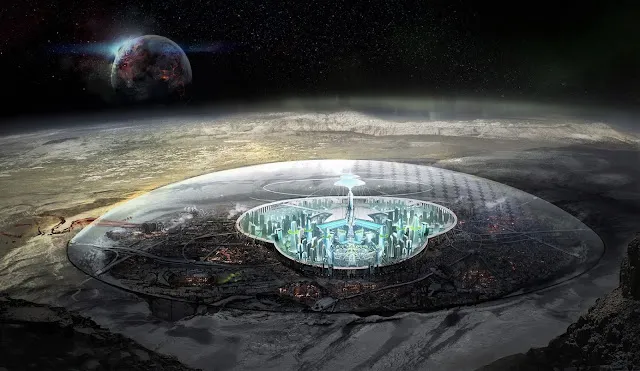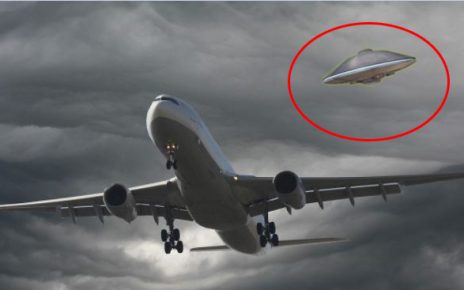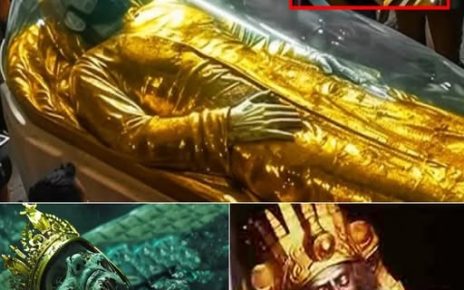
A former NASA employee in the data and photo control department manager named Ken Johnston, who worked for the space agency’s Lunar Receiving Laboratory during the Apollo missions, was fired for telling the truth.
Ken Johnston said NASA knows astronauts have discovered ancient alien cities and the remains of incredibly advanced machines on the Moon. Some of these technologies can manipulate gravity.
He claims the agency ordered the cover-up and forced him to participate.
In recent years, other scientists, technicians and engineers have also accused NASA of covering up and hiding data.
Prosecutors’ growing list of allegations ranges from hiding information about anomalous space objects and lying about discovering artifacts on the surface of the Moon and Mars to denying evidence of life reported by the Viking probe in the mid-1970s.
According to Johnston, the Apollo astronauts brought back photographic evidence of artifacts found during their extravehicular activities (EVAs) on the Moon. Johnston claimed that NASA ordered the EVA footage to be destroyed while he was at the Jet Propulsion Laboratory (JPL), but he refused.
When he went public, the Space Agency fired him.
In a press release, Kay Ferrari, director of JPL ‘s SSA program , explained why she asked Johnston to resign: He had publicly criticized his employer.
Johnston refused to tender his resignation, he was summarily dismissed without cause.
After his abrupt departure, he indicated that he was sick and tired of the US government sitting on the test for more than four decades, evidence that ancient alien cities exist on the Moon.
“I have nothing to lose,” he said. “I argued with NASA and got them to shoot me.”
Evidence has emerged of large structures, perhaps even a base on the far side of the Moon, that appear to support Johnston’s claims.
Space scientist furious over NASA cover-ups
Ken Johnston isn’t the only one who has issues with NASA.
The scientist who oversaw the massive life-detection experiment aboard the 1976 Viking test probe on Mars continues to criticize the US Space Agency.
Gilbert Levin insists that his biological experiment proves that there is life in the Martian soil.
“We have received positive data that meets all the criteria from previous missions that have proven the existence of microbial life on Mars,” Levin told National Geographic. “I found life on Mars in 1976,” the scientist said.
The prominent scientist is so angry with NASA that he even created his own website to shout to the world that there really is life on the red planet.

Many space scientists have challenged NASA over another fraud the agency has allegedly committed for decades: the color of the Martian sky.
For years, the space agency has been publishing photos of Mars with reddish skies and rust-red landscapes. They got away with it until independent researchers and missions to Mars led by the European Space Agency (ESA) revealed that the Martian sky actually looks very similar to Earth’s sky — and the Martian landscape looks quite similar to the salmon-colored terrain in the southwest.
Holger Isenberg wrote about it on the German website “The Color of Mars”. Here is the translated link with the photographic evidence.
More controversial photos
A former NASA employee, Donna Hare, has accused NASA of doctoring, obfuscating and obscuring thousands of photos over the years. She has gone on record as saying that the space agency erased inconvenient anomalies in certain devastating photos.
During his time at NASA, he was a specialist working as an illustrator and photographic slide technician. His awards include the 1969 Apollo Achievement Award, a Skylab Award, and a Special Commemorative Medal for Meritorious Service involving a joint U.S.-Russian Apollo-Soyuz space mission.
A technical illustrator by trade, Hare has done just about everything during her time at the Space Agency, working as a space illustrator and in the precision slide lab. She illustrates spacecraft, satellites, launch pads, landing sites, lunar maps and much, much more.
Hare worked as a subcontractor at the Agency for more than 15 years. When she blew the whistle on NASA, she went public and appeared as a guest on AM radio WOL in Washington, D.C.
His testimony is controversial and some support his arguments while others do not.
Apollo 17 and the incredible “robot head”


“In December 1972, Apollo 17 astronauts Eugene Cernan and Harrison Schmitt spent about 75 hours on the Moon. During their lunar expedition, they took this photo above. Amazingly, it appears to be the head of a robot. Cernan commented that even though he was seeing it with his own eyes, he still couldn’t believe it,” author Joe Szostak wrote in his book and on his website.
“After getting over the initial shock, he realized that it couldn’t possibly be a human skull. After all, it was lying in a debris field from an impact crater, which had spewed all sorts of debris and material from just below the valley floor. Something as fragile as fossilized bone couldn’t possibly survive such an impact.” Furthermore, exposure to extreme solar and cosmic radiation would have long since reduced the organic material to a fine powder. This object was undoubtedly of mechanical origin. Color enhancements revealed that the ‘head’ has a distinct red band around the area where the upper lip should have been, a feature that clearly appeared to be painted or anodized onto the object.
“Composites of another painting showed that the ‘head’ had two eye sockets, a forehead, eyebrows, a nose with a nasal cavity, a pair of cheekbones and the upper half of the jaw. The lower jaw appeared to be missing.
“Cernan called the area ‘a mysterious place found.’” Many of the rocks had highly unusual spectral qualities, reflecting light like highly polished crystals or metal boxes.
“The photo below is an enlargement of the severed head photographed at Shorty Crater by Cernan and Schmitt. To date there has been no satisfactory explanation of this artifact from the scientific community…”
Lunar artifacts are obviously not natural
Hubble’s incredible photo of a perfect pyramid on the Moon

The image of this pyramid on the Moon was obtained by the Hubble Space Telescope (HST) in December 2008.
Photographs of the Russian spacecraft Luna 9
Luna 9 was an unmanned space probe in the Soviet Union’s lunar program. On February 3, 1966, Luna 9 became the first spacecraft to achieve a soft landing on a planet other than Earth and to transmit photographic data from the Moon to Earth. The photo is of the Luna 9 probe. It shows what appears to be a large craft or vehicle shaped like a boat traveling the oceans of Earth, reaching a point at one end and having a raised section at the top. A wire or tube appears to extend from the back of the object toward the surface. Contact with the Luna 9 probe was lost on February 6, 1966, just three days after landing.

There are strange things on the Moon and Mars. Strange things have been found on the Martian moon Phobos, Saturn’s moon Titan, and a handful of other unknown moons.
The evidence seems to show that we were not always alone in the Solar System. In fact, the place seemed to be completely packed with people.



